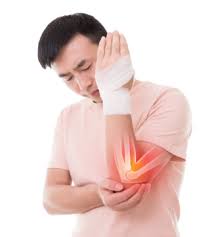


Back and muscle pain are common afflictions that impact millions of people worldwide, ranging from mild discomfort to debilitating conditions that can severely affect quality of life. Understanding the root causes, effective management strategies, and preventive measures is crucial for achieving lasting relief and improving overall well-being. In this comprehensive guide, we will explore the intricacies of back and muscle pain, providing valuable insights into their origins, treatments, and prevention.
Pain O soma 350‘s strong muscle relaxant qualities, it quickly relieves pain and regains flexibility so you may resume living life to the fullest. Say goodbye to discomfort caused by tense muscles and welcome the solace and alleviation that Pain O Soma 350mg provides. The action of the medicine will only help reduce the pain but does not cure the injury.
Causes of Back Pain
Back pain can stem from a variety of sources, including muscle strain, ligament sprain, herniated discs, and degenerative disc disease. Poor posture, lack of exercise, and improper lifting techniques are common contributors to back pain. Chronic conditions such as arthritis and osteoporosis can also play a significant role. Identifying the specific cause is essential for developing an effective treatment plan.
Muscle Pain Origins
Muscle pain, or myalgia, can result from overuse, injury, or underlying health conditions. Common causes include strains and sprains, which occur when muscles are stretched or torn. Fibromyalgia, a chronic condition characterized by widespread muscle pain and fatigue, is another significant contributor. Additionally, muscle pain can arise from infections, autoimmune diseases, and medications.
Prosoma 350 [Carisoprodol] is the active component of the medication. It is categorized as a muscle relaxant and is used to alleviate pain in the muscles, including spasms. Muscle relaxation is the outcome of carisoprodol’s action on the central nervous system, which affects nerve transmission. It is used to relieve from painful sensations in the body due to muscle injury stress, sprain etc.
Medical Interventions
For severe or persistent back and muscle pain, medical interventions may be necessary. These can include prescription medications, physical therapy, and in some cases, surgery. Nonsteroidal anti-inflammatory drugs (NSAIDs), muscle relaxants, and opioid pain relievers are commonly prescribed to alleviate pain and reduce inflammation. Physical therapy focuses on strengthening muscles, improving flexibility, and promoting proper posture.
Alternative Therapies
Many individuals find relief through alternative therapies, such as chiropractic care, acupuncture, and massage therapy. These approaches can help alleviate pain by targeting specific pressure points, improving blood flow, and reducing muscle tension. Herbal supplements and essential oils are also popular for their anti-inflammatory and analgesic properties.
Lifestyle Modifications
Adopting healthy lifestyle habits is crucial for managing and preventing back and muscle pain. Regular exercise, including strength training, stretching, and aerobic activities, helps maintain muscle strength and flexibility. Proper posture while sitting, standing, and lifting can significantly reduce the risk of developing back pain. Maintaining a healthy weight is also important, as excess weight can strain the back and muscles.
Ergonomic Adjustments
Making ergonomic adjustments in the workplace and at home can help prevent back and muscle pain. Ensure that your workstation is set up to promote good posture, with your chair, desk, and computer positioned correctly. Use ergonomic chairs and supportive cushions to reduce strain on your back. When lifting heavy objects, use your legs rather than your back to prevent injury.
Regular Exercise
Engaging in regular exercise is one of the most effective ways to prevent back and muscle pain. Focus on activities that strengthen the core muscles, such as Pilates and yoga, as these muscles support the spine. Cardiovascular exercises like walking, swimming, and cycling also promote overall health and reduce the risk of pain. Always warm up before exercising and cool down afterward to prevent muscle strain.
Healthy Diet
A balanced diet rich in vitamins and minerals supports muscle and bone health. Ensure adequate intake of calcium, vitamin D, and magnesium, which are essential for maintaining strong bones and muscles. Foods high in antioxidants can also help reduce inflammation. Staying hydrated is crucial, as dehydration can lead to muscle cramps and discomfort.
While many cases of back and muscle pain can be managed with home remedies and lifestyle changes, certain symptoms warrant medical attention. Seek professional help if you experience:
Early intervention can prevent the progression of serious conditions and improve outcomes.
Understanding back and muscle pain is the first step toward effective management and relief. By recognizing the causes, implementing treatment strategies, and adopting preventive measures, individuals can significantly reduce their pain and improve their quality of life. Whether through medical interventions, alternative therapies, or lifestyle modifications, achieving relief from back and muscle pain is possible with a comprehensive and proactive approach.